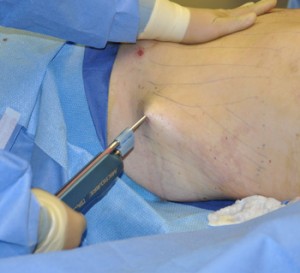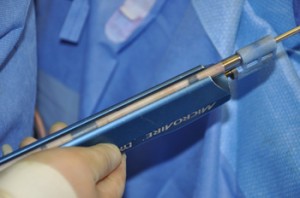Liposuction is a plastic surgery technique that relies heavily on mechanical equipment as well as some fundamental physics for effective subcutaneous fat removal. For many years liposuction was done using blunt-tipped cannulas with various hole arrangements just off of its rounded end. Subsequent technological advancements have focused on delivering various energies to the fat tissue to help break it down prior to cannular suction extraction including ultrasound, laser and high-pressure water to name a few of the most notable.

This vibratory action at the cannula tip not only helps in the removal of fat but allows more precise control of its removal. The vibrating tip allows the surgeon to place the tip of the cannula in exact location and allow it to do the work, resulting in greater precision of the fat removal. This vibratory motion is also of benefit when doing liposuction under local or light sedation anesthesia. These vibrations appear to dampen transmitted pain stimulation through the nerve ends, making it potentially less uncomfortable than other liposuction methods.

Studies have been done to determine whether the effects of mechanical tissue injury produced by a PAL liposuction device results in some tissue shrinkage and tightening. In these clinical studies there does appear to be a mild skin tightening effect that could be quantitatively measured, Since the skin and fat temperatures do not approach that known for collagen denaturation (around 40 to 42 degrees C), how does this effect occur? Most likely the observed skin surface area reductions was due to natural retraction from underlying fat volume removal rather than active skin contraction by induced collagen alteration. This is a typical passive form of tissue tightening effect.
PAL is a very effective liposuction method of fat removal that has the primary benefits of better precision in fat removal, efficient fat extraction and less surgeon fatigue in doing the procedure. It may not be the most highly marketed form of liposuction but it deserves to be.
Dr. Barry Eppley
Indianapolis, Indiana


